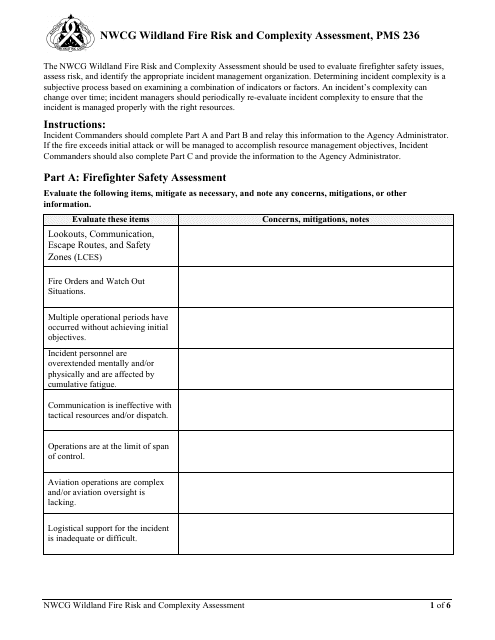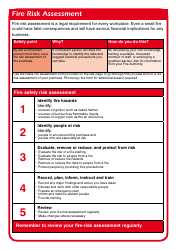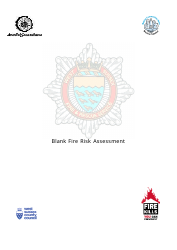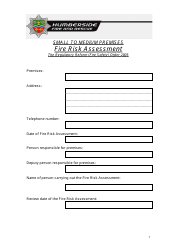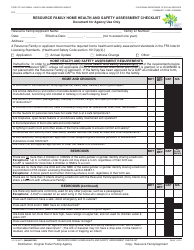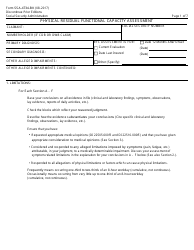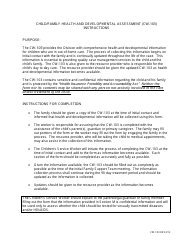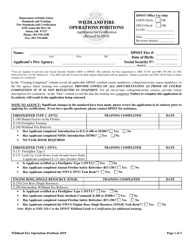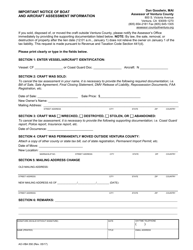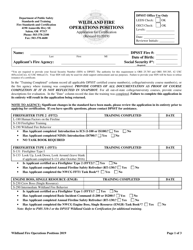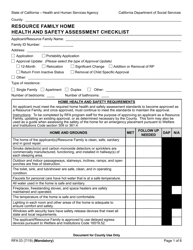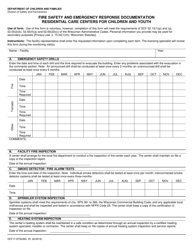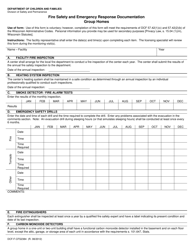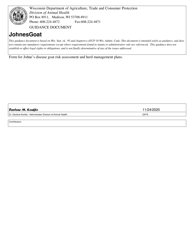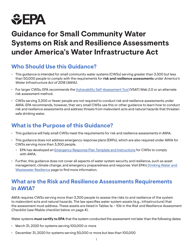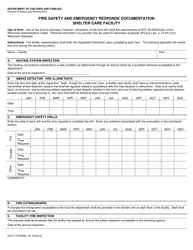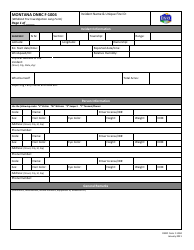Form PMS236 Nwcg Wildland Fire Risk and Complexity Assessment
What Is Form PMS236?
This is a legal form that was released by the National Wildfire Coordinating Group and used country-wide. As of today, no separate filing guidelines for the form are provided by the issuing department.
FAQ
Q: What is Form PMS236?
A: Form PMS236 is a document used for Wildland Fire Risk and Complexity Assessment by NWCG (National Wildfire Coordinating Group).
Q: What is NWCG?
A: NWCG stands for National Wildfire Coordinating Group. It is an interagency organization that coordinates wildland fire management in the United States.
Q: What is a Wildland Fire Risk and Complexity Assessment?
A: A Wildland Fire Risk and Complexity Assessment is an evaluation process used to assess the potential risks and complexities associated with a wildfire incident.
Q: Why is a Wildland Fire Risk and Complexity Assessment necessary?
A: A Wildland Fire Risk and Complexity Assessment is necessary to determine the appropriate resources and strategies needed to manage and control a wildfire incident.
Q: Who uses Form PMS236?
A: Form PMS236 is used by fire management personnel, incident management teams, and other agencies involved in wildland fire management.
Q: What information does Form PMS236 include?
A: Form PMS236 includes information such as incident name, location, fire danger rating, weather conditions, fuel types, and fire behavior.
Q: Is Form PMS236 required for all wildland fire incidents?
A: Form PMS236 is not required for all wildland fire incidents, but it is widely used for assessing and managing fire risk and complexity.
Form Details:
- The latest available edition released by the National Wildfire Coordinating Group;
- Easy to use and ready to print;
- Yours to fill out and keep for your records;
- Compatible with most PDF-viewing applications;
- Fill out the form in our online filing application.
Download a fillable version of Form PMS236 by clicking the link below or browse more documents and templates provided by the National Wildfire Coordinating Group.
